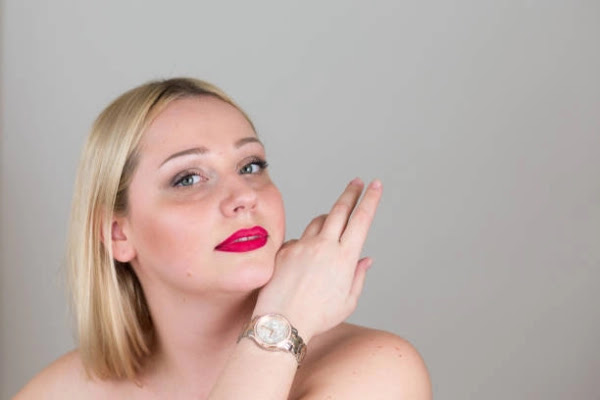Influence of Lipstick Shades
Facial Perception and First Impressions
Introduction:
Lipstick is more than just a cosmetic product; it serves as
a powerful tool for self-expression and communication. The shade of lipstick a
person wears can significantly impact how they are perceived by others,
influencing first impressions and shaping social interactions. In this
exploration, we delve into the fascinating influence of lipstick shades on
facial perception and first impressions, examining how color psychology and
cultural associations play a role in shaping these perceptions.
Color Psychology and Lipstick Shades:
Color psychology suggests that different colors evoke
specific emotions and associations, influencing how they are perceived by
others. This principle applies to lipstick shades as well, with each color
carrying its own symbolic meaning and cultural connotations.
For example, red lipstick is often associated with
confidence, sensuality, and power. Studies have shown that wearing red lipstick
can enhance perceptions of attractiveness and dominance, making the wearer
appear more assertive and self-assured. Red lipstick is also associated with
passion and romance, evoking feelings of desire and allure.
On the other hand, nude lipstick shades are often perceived
as natural, understated, and approachable. Nude lipstick is associated with
simplicity and elegance, making the wearer appear polished and sophisticated.
Nude lipstick shades are versatile and can be worn in professional settings or
casual environments, making them a popular choice for everyday wear.
Similarly, pink lipstick shades are associated with femininity,
youthfulness, and playfulness. Lighter pink shades convey a sense of innocence
and sweetness, while darker pink shades can be more bold and flirtatious. Pink
lipstick is often seen as a softer alternative to red, offering a more subtle
way to add color and vibrancy to the lips.
Cultural Associations and Lipstick Shades:
In addition to color psychology, cultural associations also
influence how lipstick shades are perceived and interpreted. Different cultures
may have unique meanings and symbolism attached to specific colors, impacting
their use in beauty rituals and social interactions.
For example, in Western cultures, red lipstick is often
associated with glamour, sophistication, and femininity. Hollywood icons like
Marilyn Monroe and Elizabeth Taylor popularized the classic red lip look,
cementing its status as a timeless symbol of beauty and elegance.
In Asian cultures, red lipstick may carry different
connotations, symbolizing luck, prosperity, and celebration. Red is considered
a lucky color in many Asian countries, often worn during festive occasions and
special events.
In the Middle East, darker lipstick shades such as deep reds
and burgundies are popular choices, reflecting cultural preferences for rich,
luxurious colors. Dark lipstick shades are often worn to make a bold statement
and enhance facial features, particularly during formal gatherings and social
events.
Impact on Facial Perception and First Impressions:
The shade of lipstick a person wears can have a significant
impact on how they are perceived by others, influencing first impressions and
shaping social interactions. Studies have shown that lipstick can affect
perceptions of attractiveness, competence, and personality traits.
For example, research published in the "Journal of
Personality and Social Psychology" found that wearing red lipstick can
enhance perceptions of attractiveness and competence. Participants rated women
wearing red lipstick as more attractive, confident, and dominant compared to
women wearing no lipstick or a different color.
Similarly, a study conducted by researchers at Gettysburg
College found that lipstick can influence perceptions of personality traits
such as warmth and competence. Participants rated women wearing lipstick as
more competent and confident compared to women wearing no lipstick.
Additionally, participants perceived women wearing red lipstick as more
dominant and assertive, while women wearing pink lipstick were seen as more
nurturing and approachable.
Furthermore, the shade of lipstick a person wears can also
influence how they feel about themselves and their self-confidence. Studies
have shown that wearing lipstick can boost self-esteem and improve mood,
leading to a more positive self-perception and enhanced social interactions.
Practical Applications:
The influence of lipstick shades on facial perception and
first impressions has practical implications for personal grooming,
professional settings, and social interactions. Understanding the symbolic
meaning and cultural associations of different lipstick shades can help
individuals make informed choices about their appearance and how they present
themselves to others.
In professional settings, for example, wearing lipstick can
enhance perceptions of competence and professionalism. Opting for neutral or
muted lipstick shades can create a polished and put-together look, while still
allowing for individual expression.
In social settings, lipstick can be used to make a statement
and express personality. Choosing a bold lipstick shade like red or pink can
attract attention and spark conversation, while still conveying confidence and
self-assurance.
Conclusion:
In conclusion, lipstick shades have a powerful influence on
facial perception and first impressions, shaping how individuals are perceived
by others and influencing social interactions. Color psychology and cultural
associations play a significant role in determining the symbolic meaning of
different lipstick shades, impacting perceptions of attractiveness, competence,
and personality traits. Understanding the influence of lipstick shades can help
individuals make informed choices about their appearance and enhance their
self-confidence in various settings. As such, lipstick serves not only as a
cosmetic product but also as a tool for self-expression, communication, and
personal empowerment.
